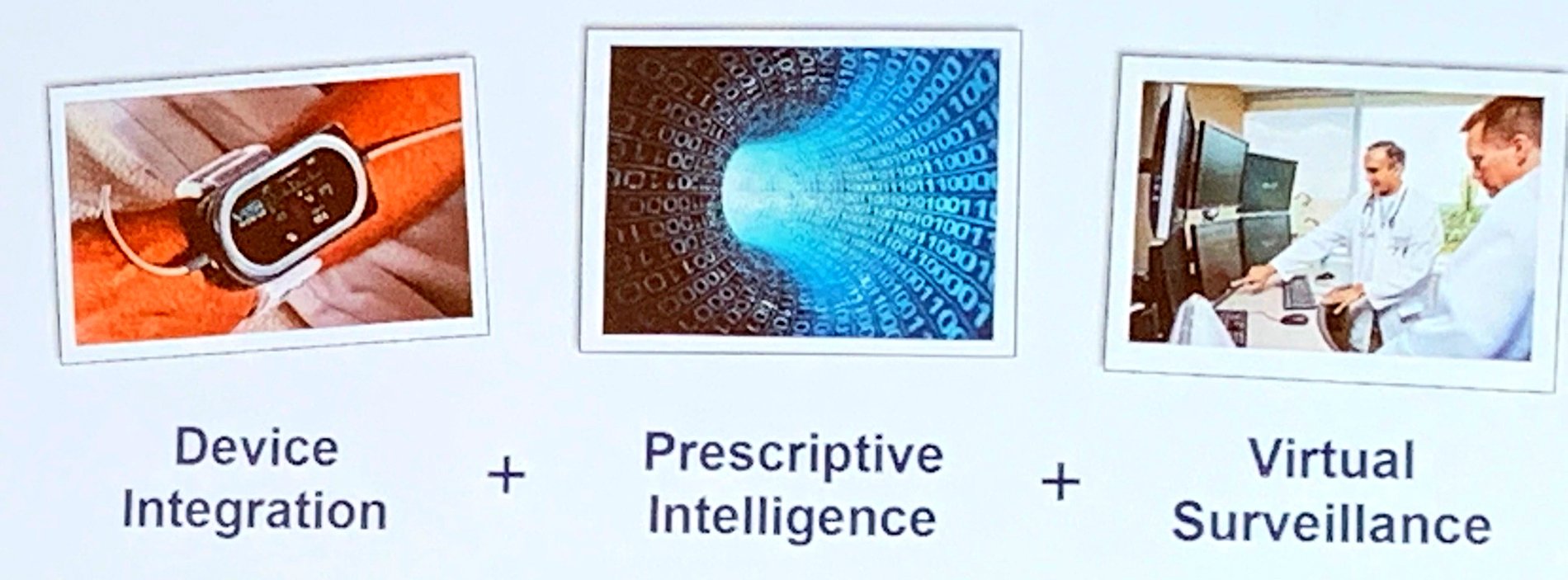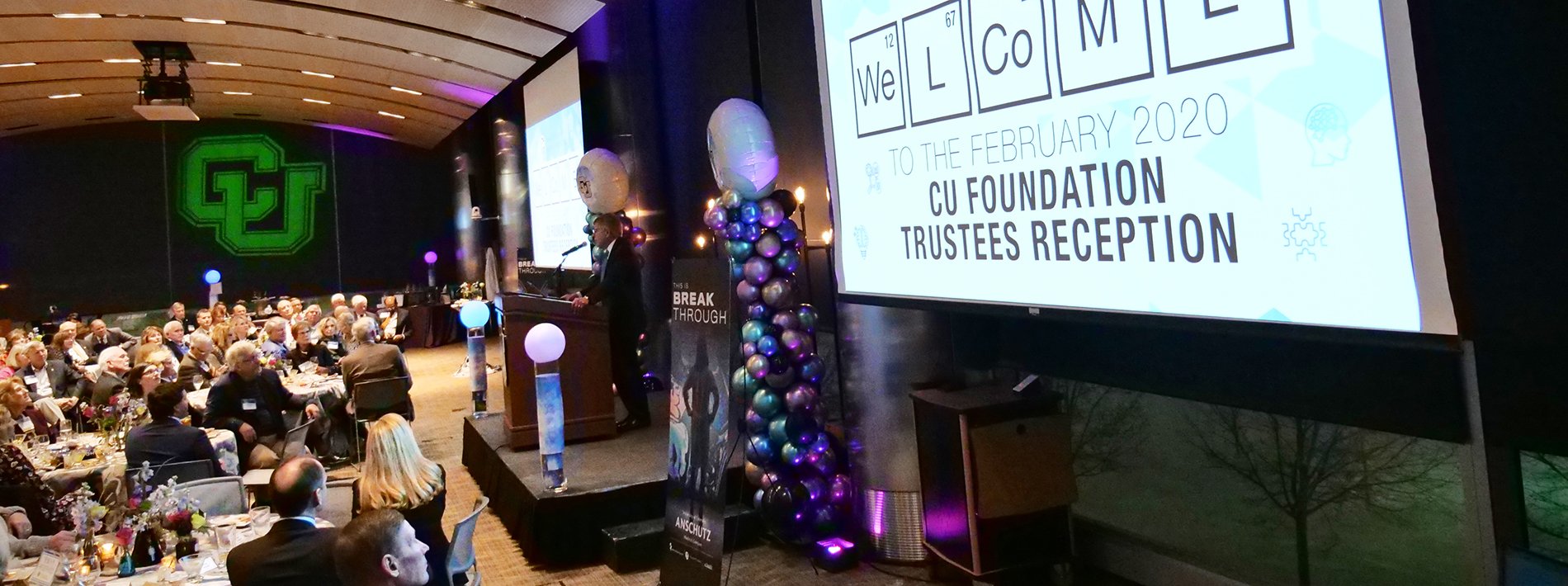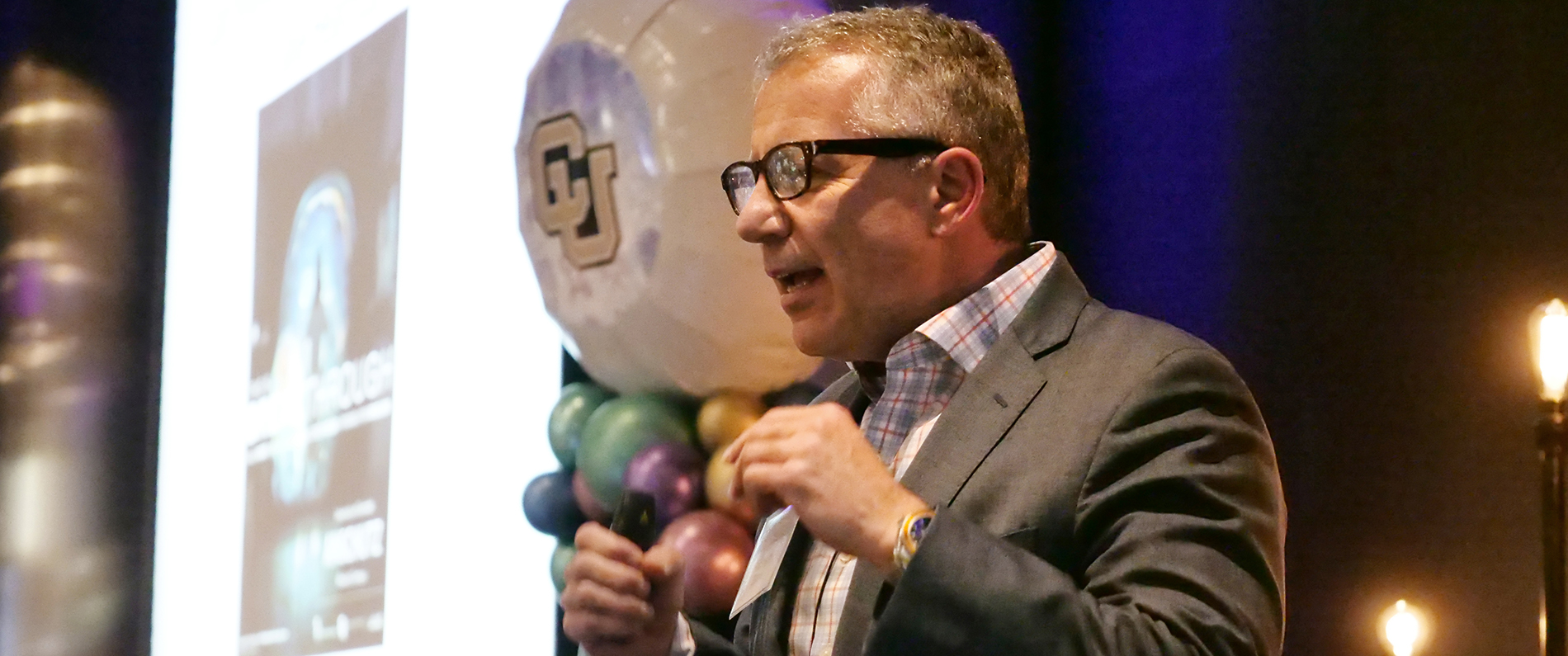Until now, technological upheavals have emanated from the usual hubs, such as Cupertino, Calif., (Google) and Seattle (Amazon). More and more, however, the best minds are coming to Colorado, where the healthcare space sits ripe for innovation.
“We have an incredible ecosystem in Colorado. We think we can be differentiated, and we are,” said Richard Zane, MD, chief innovation officer for UCHealth and professor and chair of the Department of Emergency Medicine in the University of Colorado School of Medicine.
While Uber and Amazon have disrupted their industries — and made life easier for consumers – healthcare remains in the “Kodachrome and Polaroid” era, according to Zane, who gave a keynote address to an audience of about 100, including CU President Mark Kennedy and Regent Sue Sharkey, at a recent CU Foundation Trustees reception.
Increasingly, healthcare revolutionaries are seeking new solutions here in the Rockies.

One of the slides in Dr. Richard Zane's presentation, illustrating how the intersection of disciplines fuels technological advancement.
CU Anschutz Chancellor Don Elliman shared two video spots from the “This is Breakthrough” campaign that, by highlighting actual clinicians and researchers at CU Anschutz, captures the essence of the campus’s enterprise. “Our ability to be at the leading edge of what the future of healthcare looks like is what’s going to define the success of this campus,” Elliman said.
CU Anschutz at center of Colorado revolution
Colorado, helped by the engine of innovation and discovery at CU Anschutz, is distinguishing itself as a place for partnerships. Collaborations with technology businesses – especially those developing device integration, prescriptive intelligence and virtual surveillance – will drive the wave of necessary disruption, said Zane, also founder of the UCHealth CARE Innovation Center.
“We have brilliant providers and researchers at CU Anschutz,” he said. “We have UCHealth and Children’s Hospital Colorado – two of the best hospital systems in the U.S. We have a data warehouse that is fundamentally differentiated from the way in which other healthcare systems store and access data. We think pragmatically about how to partner and solve things quickly. We’ve made it easy to work with us.”
For example, leaders at CU Innovations, the CARE Innovation Center and the CU Anschutz Medical Campus have met with over 600 companies in the last 2 ½ years.
Evolving world economy
These collaborations focus on looking through the lens of a patient – the key to innovation in the healthcare space. And, unfortunately, the nation’s healthcare system often lets patients down. “They see an unnavigable structure, crowds, lines and paralyzing expense. Americans spend $3.5 trillion a year on healthcare,” Zane said.

CU Anschutz Chancellor Don Elliman introduces keynote speaker Dr. Richard Zane at the CU Foundation Trustees reception on Feb. 6.
In just the last decade, he said, the world economy has evolved from apps and mobile technology to a new group of dominators – 5G digital connectivity, artificial intelligence and data science. By 2025, knowledge is expected to double every 12 to 14 hours.
He noted that the key to processing this avalanche of data will be using machines and using data science to cull predictive and prescriptive analytics from a patient’s electronic medical record, as well as from on-body sensors that will blur the lines between the hospital and home.
How partnerships are working
Zane gave examples of how CU Anschutz-based clinicians and researchers are partnering with industry to improve patient outcomes, lower medical costs and advance science. The examples included:
- Clay Smith, MD, a professor of medicine-hematology and director of CU Anschutz’s Blood Disorders and Cell Therapies Center, asked the question: What does precision medicine look like for a person with acute myeloid leukemia? He has partnered with industry to analyze millions of clinical and genomic variables that determine how a patient will respond to different forms of treatment. This results in data that helps make individualized treatment plans for patients in different AML subgroups. While at early stages of development, the hope is that these personalized treatment recommendations will improve survival and quality of life while significantly lowering the mortality rate in the subgroup.
- Working with the innovative teams at UCHealth and CU Anschutz, James Mault, MD, FACS, developed the BioSticker – an on-body sensor that allows continuous monitoring of vital signs and actionable insights, delivered to clinicians from patients at home. Mault launched BioIntelliSense, Inc., a cutting-edge remote patient monitoring company, around the technology. The BioSticker enables 30 days of affordable and continuous monitoring. “What happens to the data?” Zane asked. “You analyze it and build predictive and prescriptive algorithms and bring these findings into the Virtual Health Center (at UCHealth). Then the center becomes like air traffic control: instead of a nurse watching over 100 patients, a nurse can watch over 100,000 patients.”
‘Wild ride’
These provide just a snapshot of the developments that will transform healthcare in the coming years, Zane said.
“The most advancement has happened at the intersection of disciplines,” he said, adding that in the coming decades “we are going to propel healthcare into a place it has never been – and it’s going to be a wild ride.”



